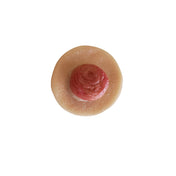Sustainability is just the latest buzzword.
If you don’t put in place the changes that will really make a difference.
Healthcare simulation environments are all about learning, trialling and perfecting skills.
The equipment you use for your simulation scenarios and training needs to be robust enough to withstand repeated use.
It has to be sustainable.
Products that have to be replaced every 5 minutes are no good for you and they’re certainly no good for the environment.
Having durable and reliable equipment means you can succession plan- a key driver of sustainable practice:
- Increased product durability means more students can make use of the equipment before it needs to be replaced.
- Knowing how long your equipment will last allows you to plan a replacement schedule, so you can budget effectively.
- Products with longer lifespans save you money.
It’s important to us that the products we offer you last the distance.
That’s why we recommend the Blue Phantom range of Ultrasound trainers.
Each model features self-healing tissue that can take around 1000 needle sticks.
A study carried out in partnership with the US government found,
'The Blue Phantom™ 2 Vessel Original Ultrasound Training Model demonstrated excellent durability after 1,000 needle punctures in a 1- cm2 area. Based on the length of simulated vessel in each model, it should support over 25,000 simulated attempts at vascular access.'*
That's a lot of insertions!
We've put together a guide featuring the most popular ultrasound models in the UK.
Take a look and discover for yourself the durability and reliability of the Blue Phantom Range.
*Schofer JM, Nomura JT, Bauman MJ, Sierzenski PR. Prospective durability testing of a vascular access phantom. West J Emerg Med. 2010 Sep;11(4):302-5. PMID: 21079696; PMCID: PMC2967676.



























